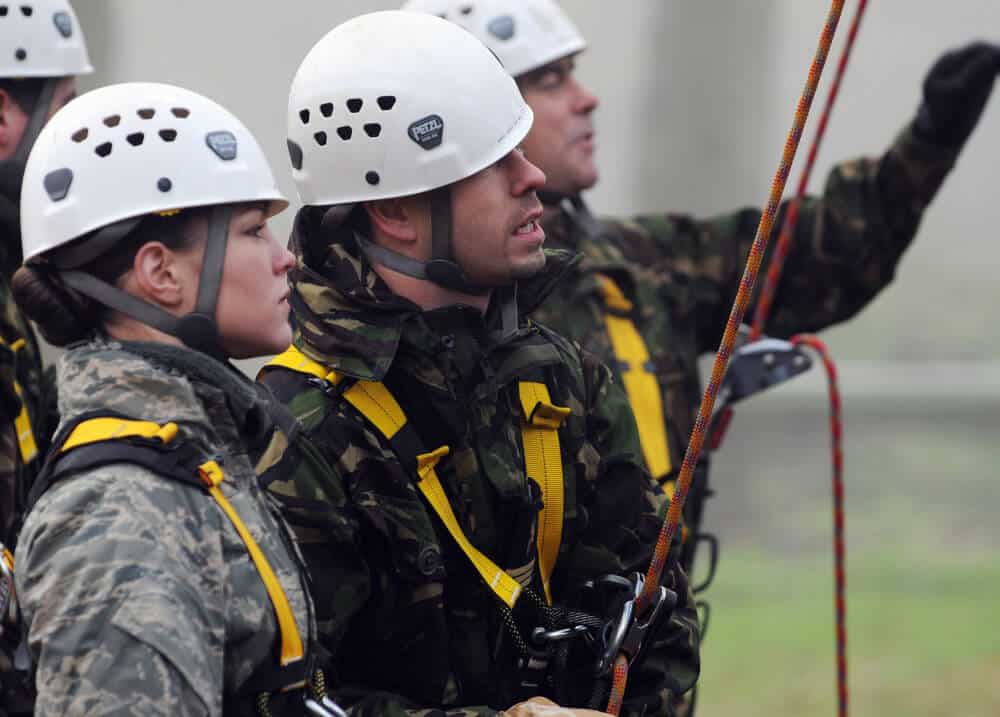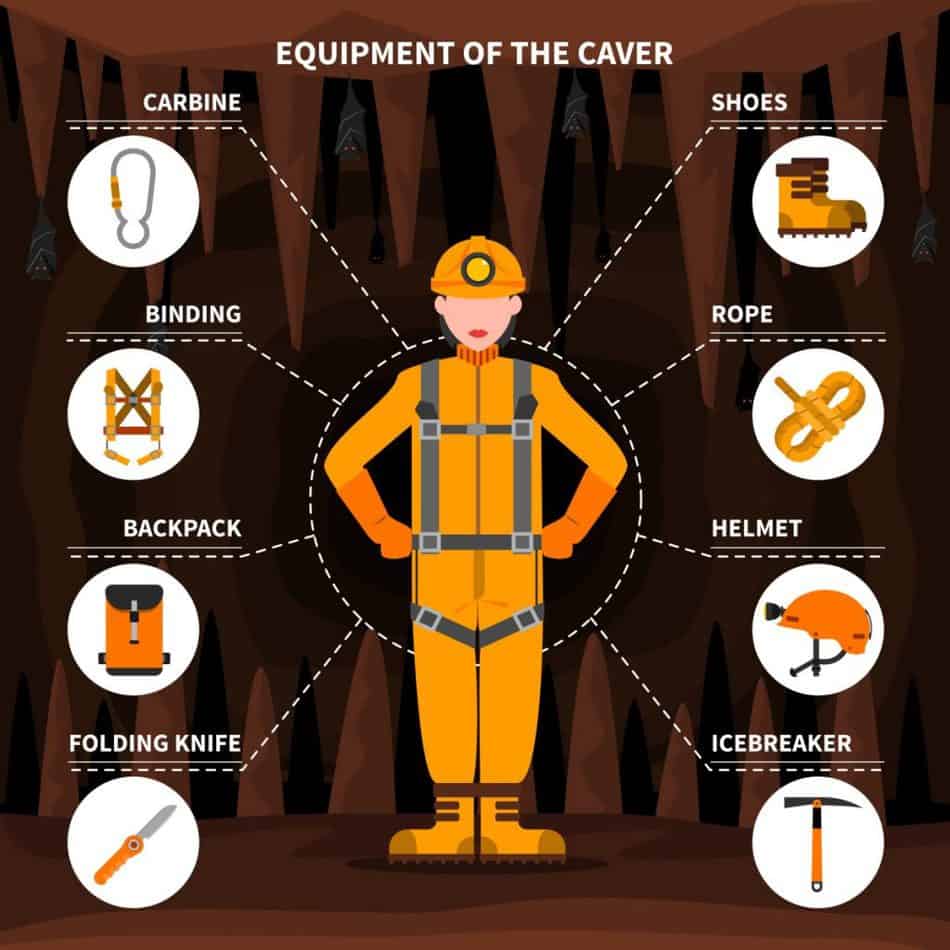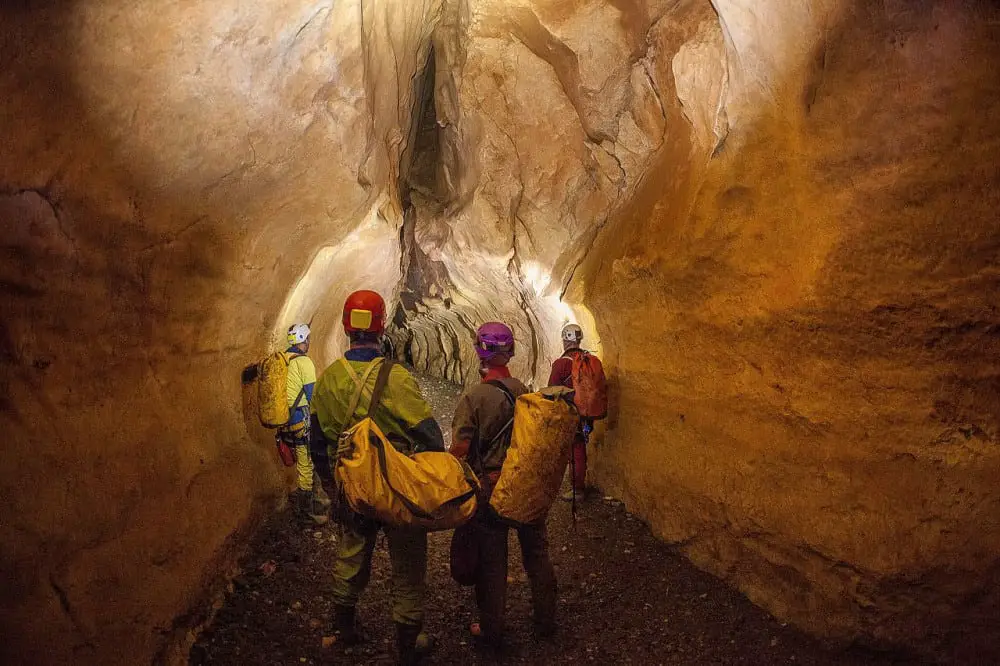Activities like caving can create a strong bond between you and your children. It also teaches them about geology, science, and biology as they explore. Here’s some advice on how to get them into this rewarding outdoor activity.
Play caving trivia games to gauge their interest. Then get them the right clothing, caving boots, gloves, and pants. Visit beginner caves in your area and start with the easy trails. Book guided cave tours that require little crawling or climbing. Avoid wet caves and lengthy excursions at first.
For exactly how old they should be to start caving, children aged 6 or older should be ok, as long as they understand instructions and follow directions.
But before you step into an actual cave with your children, let’s look at how to get them interested in the hobby.
If you are ready to get started caving, be sure to read my Beginners Guide and check out my recommended gear section.
Watch Caving Videos With Your Kids
One way in which you can gauge your child’s interest in something is by watching a video with them to see how they react. I suggest starting with caving videos where other kids go on caving adventures, like this episode of The River & Wilder Show:
Seeing other children having fun while exploring caves will make them want to do the same.
Play Caving Games At Home
You can create caving games in your house or backyard to spark your children’s interest. Build a “cave” out of blankets similar to building forts out of bedding. To make it more like a cave, make sure no light gets in. You can also decorate the cave with bats, stalactites, and stalagmites made with craft materials like paper and plastic.
Send them on a caving mission to find a specific toy in the darkness. Give them a flashlight or headlamp to make things more interesting.
You can also create caving trivia games where you ask a series of questions, the children write their answers down, and then whoever scores the most gets a prize of some sort. These should be very basic questions for children, like:
- Q: What types of creatures live inside caves? A: Bats, worms, insects, spiders, etc.
- Q: What can you find inside a cave? A: Water, plants, stalagmites, stalactites, etc.
- Q: Are caves hot or cold? A: Cold.
- Q: How are caves formed? A: Water flows through rock and dissolves it to create a big hole.
- Q: Can you swim inside a cave? A: Yes.
These types of questions are easy to answer but also raise more questions that will get them interested in the activity. For example, the fact that caves are cold is pretty obvious, but you can ask them why they think it’s cold, and just how cold they could be. You can tell them that hot areas like Texas have warmer caves that average around 70°F but caves up in Wisconsin can be a lot colder at around 50°F.
Another example is the question about swimming inside a cave. The short answer is yes, but your kids will ask questions like, “Should we take our bathing suits?” which will lead you into explaining what cave diving is and the fact that they can do that later once they’ve learned how to use scuba equipment.
Choose The Right Caving Gear
You don’t need to spend a lot of money starting out. But it’s essential that you get the right type of boots, gloves, and pants for your children to explore with. Most caves are wet and cold, so boots and gloves will help keep their feet and hands dry and protected.
Here are my caving gear recommendations for kids.
Boots
Rubber is the best material for caving boots. So it’s important that you select footwear for your kids that have rubber souls and tread. To start off, basic boots like these should suffice for most beginner caving trips. They will start to wear down quickly because of all the sharp rocks inside caves, but then you can go for something more durable, like the Baffin Enduro Boots (available on Amazon) if the hobby sticks. The smallest size is adult 7, so just make sure they fit at that stage.

Gloves
Gloves protect the hands from getting damaged on all the rough rocks in the cave. They also keep your hands warm and dry. At first, a good pair of water-proof gardening gloves may do the trick, but it may be difficult to find them in a size for children.
Climbing gloves usually have all the characteristics you need for caving. They’re durable, breathable, and flexible. So climbing gloves like these will keep your children’s hands safe and warm.
Pants
Caving pants are made from materials like polyurethane and polyamide because they’re water-resistant. You’ll need pants made of synthetic materials if there’s any water in the cave because natural materials like cotton absorb water and increase your weight and restrict your movement when they get soaked. That’s why I don’t recommend jeans unless the cave is 100% dry.
I recommend using synthetic materials that have waterproof properties.
Headgear
Most guided tours will have headgear available, so you won’t have to buy a helmet immediately. Just contact the cave officials and ask them about what they provide on-site. But if you plan to make caving a regular outing with the family, you’ll need to get caving/hiking helmets that have a slot to accommodate a headlamp.
For the durability, at first, you could get a foam helmet because it won’t be bumped around too much until you start crawling through a lot of tiny spaces. After a few excursions, you will see wear and tear on a foam helmet, at which time you can decide if your child will carry on caving.
Then go for something more durable, like the Petzl PICCHU, and strap a headlamp around it. The PICCHU helmet has a thick exterior shell that can handle many small impacts inside the cave.
Choose a long sleeve shirt you don’t mind damaging for protecting their arms from scratches.
For an in-depth look at what to gear up with when your caving adventures become more serious, see this article.

Find Beginner Caves In Your Area
Search for guided cave tours in the area and phone in to make sure they’re safe for first-time cavers. There are usually different routes to take at every venue, which will include basic walkthroughs and not much crawling or getting wet. In most cases, these routes are very quick to get through and you might still have time to explore the more difficult paths on the same day.
Don’t Force Kids Into Caving
For safety reasons, don’t push children to do more than they want to inside a cave. Even if they say that they’re just bored and want to leave, find the nearest exit or backtrack your way out of the cave. It’s better to abort the adventure because the slightest discomfort can turn into a panic attack quickly.
In Summary
See what your kids think of other kids caving on YouTube videos. Have fun with some caving games at home. If they seem interested, buy a few essential caving clothes and take them on guided walkthrough cave tours.
After a few caving trips, start opting for more challenging cave routes and upgrade all your gear.
The good thing is it doesn’t take much convincing to get young children excited about outdoor adventures like caving. Whether they’ll come to enjoy it on a regular basis will depend on them.

When you’re ready to get started caving, be sure to read my Beginners Guide and check out my recommended gear section.

